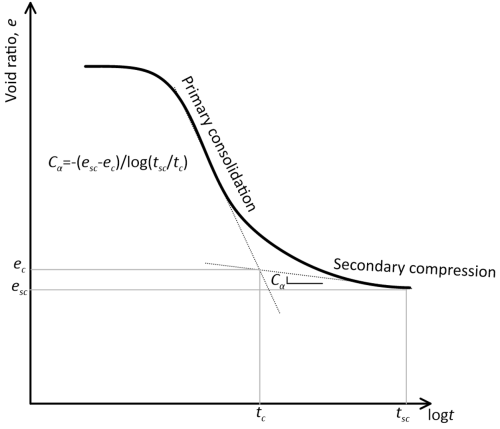4.9 Estimation of secondary compression settlement
While delving into the mechanisms of soil creep is not within the scope of this Part, it is worth presenting the expression for estimating secondary compression or creep settlement ρsc at any time that stems from Hypothesis A i.e., that soil creep commences after soil excess pore pressures have dissipated (Figure 4.42):
(4.72) ![]()
where tsc is the time when secondary compression is sought, tc is the time required for 90% consolidation to be completed, or the time required to reach U = 90% estimated from Figure 4.41, according to the mentioned above. ec and Hc in Eq. 4.72 are the void ratio and thickness of the soil layer at U = 90%, respectively, and these can be computed if we consider that:

(4.73) ![]()
where e0 is the initial void ratio of soil and Δe is the change in the soil void ratio that takes place during consolidation. In addition Cα is the creep coefficient, and is determined from oedometer tests (Figure 4.42). The creep coefficient is related to the compression index Cc. In lack of soil-specific tests, one can consider that Cα/Cc = 0.03 to 0.08 for clays and silts, and Cα/Cc = 0.05 to 0.10 for organic soils (Mitchel and Soga, 2005).

